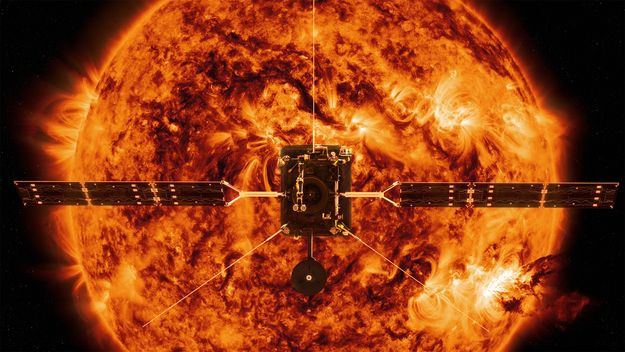ESA's Solar Orbiter Launch Postponed To Feb. 7
KEY POINTS
- ESA's Solar Orbiter launch to be delayed
- Solar Orbiter has a 19-day launch opportunity to reach Venus by December
- ESA's Solar Orbiter will join NASA's Parker Solar Probe in studying the Sun
- The two will provide complementary data to help scientists understand the Sun better
The European Space Agency (ESA), along with NASA and United Launch Alliance (ULA) confirmed a two-day delay for the Solar Orbiter spacecraft due to minor issues that had to be addressed during a recent launch vehicle countdown dress rehearsal.
This means that the spacecraft’s launch window will begin at 11:15 p.m. EST on Feb. 7 (4:15 a.m. GMT/ 5:15 a.m. CET on Feb. 8) instead of the originally planned Feb. 6 launch.
The delay was a result of the ULA teams’ discovery that an air conditioning duct leading to the Atlas 5’s Centaur upper stage had been disconnected before a scheduled dress rehearsal at Cape Canaveral. Upon inspection, the teams discovered that the duct was likely dislodged due to the gusty winds, and the countdown demonstration was eventually completed.
Such launches are naturally subject to changes, but the Solar Orbiter has a 19-day launch opportunity this coming February if it is to reach Venus by December when it will then use the planet’s gravity to move closer to the Sun.
ESA Solar Orbiter
The ESA-led Solar Orbiter mission aims to provide the first high-resolution views of the Sun’s polar regions from high latitudes, thereby providing valuable insight as to how the Sun actually works. Further, it will also investigate the connection between the Earth and the Sun in hopes of helping scientists better understand and predict space weather.
For the mission, Solar Orbiter will carry a combination of 10 in situ and remote-sensing instruments that will observe the surface of the sun, its outer atmosphere, as well as the solar wind.
The mission also has strong NASA participation. In fact, the Solar Orbiter will join NASA’s Parker Solar Probe in studying the Sun at close proximity. The difference between the two is that while the Parker Solar Probe carries a smaller payload compare to the Solar Orbiter, it does go closer to the Sun. This way, the two spacecraft can collect complementary data sets.
For instance, the Parker Solar Probe has instruments that can sample the Sun’s corona. However, it does not have cameras that can directly view the Sun as no current technology is so far capable of looking directly at the Sun from such a close distance. This is where the Solar Orbiter will lend its “eyes” from a little farther away.
Together, the two spacecraft can give us a much better understanding of our parent star.

© Copyright IBTimes 2024. All rights reserved.












